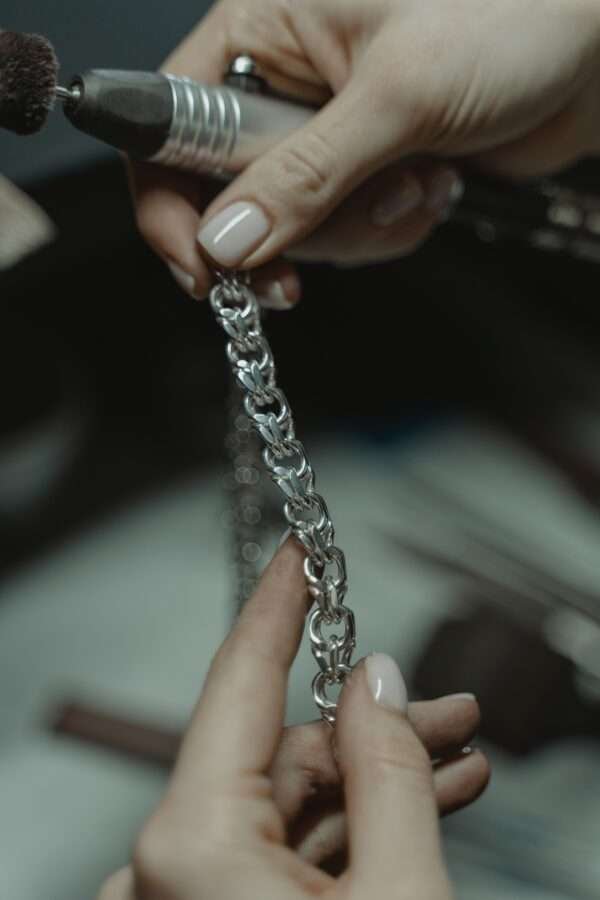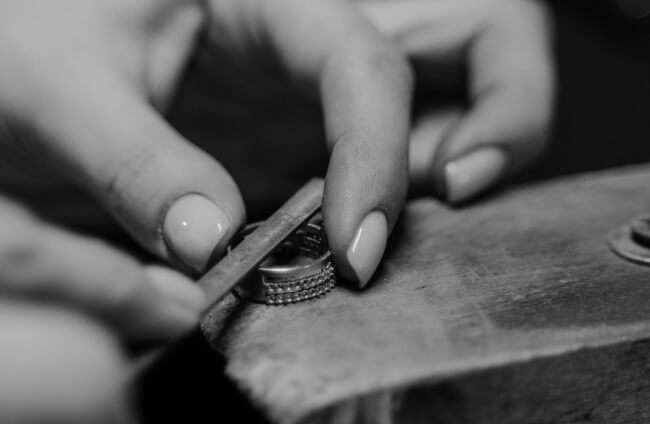- by Deema Yanni Maat
- 12/05/2023
- Jewellery Education, Metallurgy, Mixed Metals
- Comments:1
Ugly Truth About Tibetan Silver

At first glance, Tibetan Silver sounds exotic, rare, and almost mystical. The name alone can make jewellery shoppers imagine ancient traditions, cultural craftsmanship, and something truly special. Many jewellers and online sellers rave about it, marketing it as an affordable alternative to silver jewellery. But here’s the ugly truth: Tibetan silver is not what you think it is.
1. No Standardised Composition
Unlike sterling silver, which is legally defined as 92.5% pure silver, Tibetan silver is a non-standard alloy. That means one piece of jewellery may contain mostly copper, while another may contain nickel or other cheaper fillers. Some batches may even have traces of harmful heavy metals like lead or cadmium.
This inconsistency makes Tibetan silver a gamble. You never really know what’s in the piece you’re buying, because there are no regulations or guarantees. While one item might look fine, another could cause rashes, itching, or skin discolouration simply because of its unpredictable composition.
2. Potential Health Risks
One of the biggest issues with Tibetan silver is the risk of skin irritation. Nickel, commonly used in the alloy, is a well-known allergen. Many people experience redness, itching, and rashes when exposed to nickel for prolonged periods. In worse cases, long-term exposure to cheap alloys can even lead to chronic skin sensitivity.
If the alloy contains traces of lead or cadmium — as some poorly made items do — the risk increases significantly. Lead and cadmium are toxic heavy metals that pose serious health hazards, especially if absorbed through the skin over time. For people with sensitive skin or allergies, Tibetan silver is a risky choice.
3. Poor Durability
Another problem lies in durability. Unlike sterling silver or stainless steel, Tibetan silver is not built to last. Because of its mixed, low-quality composition, the jewellery tarnishes quickly when exposed to air, moisture, or sweat.
What starts as a bright, shiny piece soon becomes dull, discoloured, and stained. Unlike sterling silver — which can be polished back to life — Tibetan silver often loses its shine permanently. Over time, your “bargain” piece of jewellery may end up looking cheap and worn out, leaving you frustrated and disappointed.
4. Misleading Marketing
The name Tibetan silver itself is misleading. Many consumers assume the jewellery comes from Tibet, crafted by skilled Tibetan artisans. The reality? Most so-called Tibetan silver jewellery is mass-produced in China, often with no cultural connection to Tibet at all.
This is where the issue of cultural appropriation comes in. The term leverages the mystique and heritage of Tibetan culture for commercial gain, while providing little authenticity in return. In essence, buyers are misled to believe they’re purchasing a piece of tradition, when in fact they’re buying a cheaply made product with no ties to Tibetan craftsmanship.
5. Why It’s a Bad Investment
At first, the appeal of Tibetan silver is obvious: low prices and attractive, intricate designs. But jewellery should be more than just a temporary accessory. You want pieces that can last, be worn regularly, and even carry sentimental or resale value. Tibetan silver fails in all these aspects:
It lacks authenticity and quality.
It tarnishes quickly and loses appeal.
It carries potential health risks.
It has no long-term value or durability.
In other words, it’s a poor investment for anyone looking for real jewellery.
Better Alternatives: What You Should Buy Instead
If you’re looking for affordable yet safe and durable jewellery, you’re far better off investing in 925 sterling silver or stainless steel.
925 Sterling Silver: This is the industry standard for real silver jewellery, made with 92.5% pure silver and 7.5% other metals (usually copper). It’s durable, beautiful, and can be polished to maintain its shine. When you buy sterling silver, you know exactly what you’re getting.
Stainless Steel: Modern, hypoallergenic, and highly durable. Stainless steel does not tarnish easily, is resistant to scratches, and is perfect for everyday wear. Many fashion brands now use stainless steel because it’s affordable, safe, and built to last.
Both options give you long-lasting value and peace of mind, unlike Tibetan silver which leaves too much uncertainty.
Buy 925 Sterling Silver or Stainless Steel Jewellery instead
Tibetan silver may sound alluring, but the truth is far less appealing. It’s not real silver, it’s not durable, and in many cases, it’s not even safe. On top of that, its name often misleads consumers into believing they’re buying something authentic and culturally significant, when they’re not.
When shopping for jewellery, your money is better spent on real materials — sterling silver, stainless steel, or even gold plating on quality bases. These metals give you the confidence that your jewellery will not only look good today but also last for years to come without putting your health at risk.
So next time you come across jewellery labelled as Tibetan silver, remember the ugly truth: it’s more marketing gimmick than metal. Choose wisely, and invest in jewellery that truly carries both beauty and substance.


